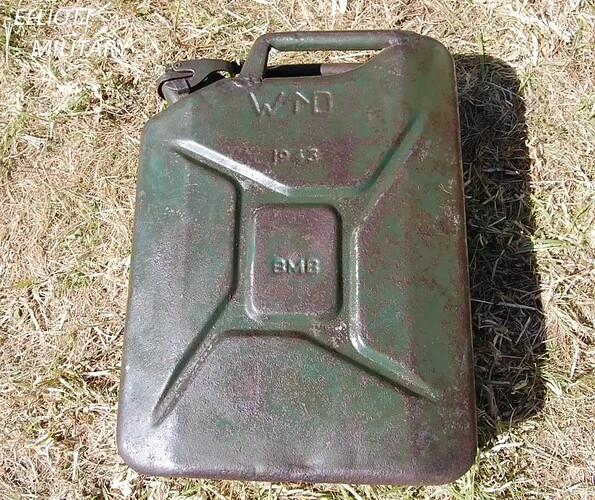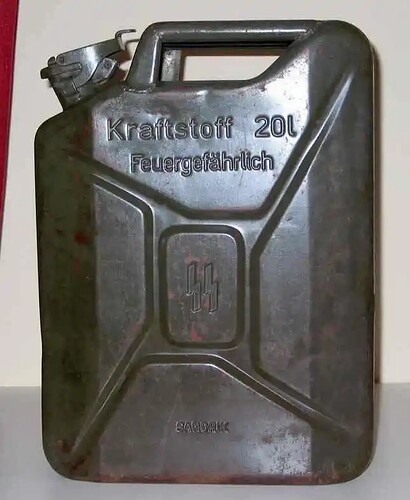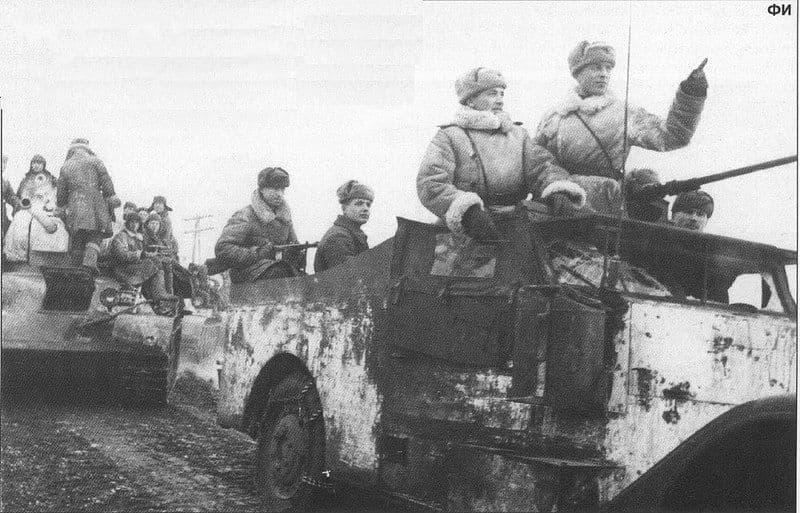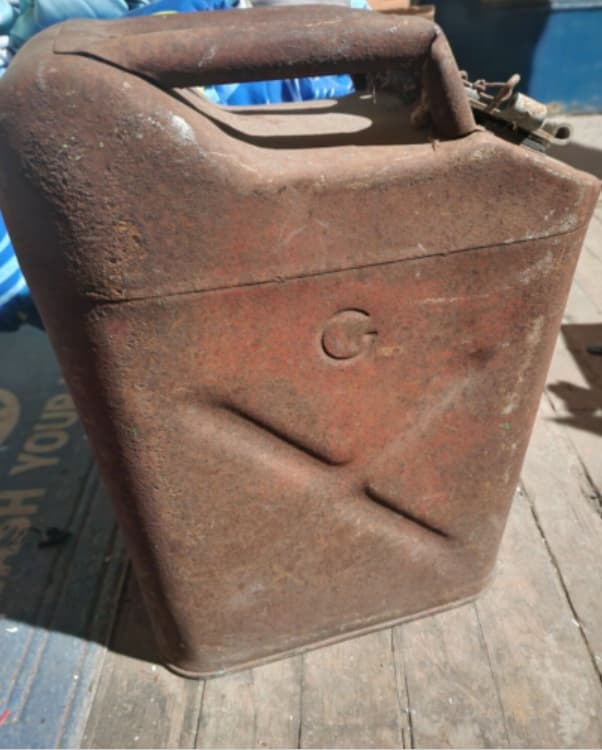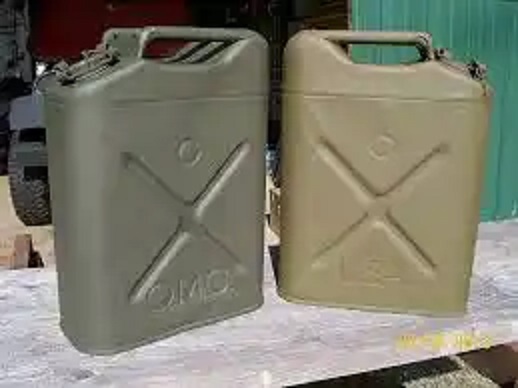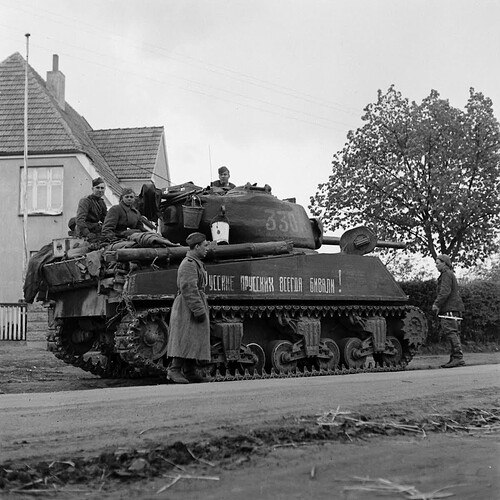Quick & dirty question. Did the Soviets receive US jerry cans via Lend-Lease? Sounds logical but dont recall photos or mention. (Seems a lot easier to simply ask than look through billions of pics)
They got tons of them along with the thousands of vehicles we lend-leased to the Soviets. it was part of the BII** gear that came with the tank.
** Basic Issued Items.
Kind a what I figured. Like I said, never seen photos … but never really looked. Spasiba.
They would’ve gotten one water can per tank. They had their own fuel cans and got many more from the Germans, as did the western Allies.
KL

H.P.
“Studer” carrying liberated German cans on the front bumper
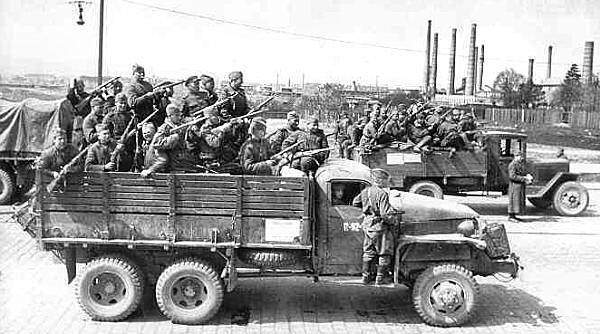
See Ginos post below
Or it is a US supplied blitz jerry can. Early in the war, US vehicles could be seen w/British-style blitz jerry cans, which were copies of German blitz jerry cans.
US blitz jerry can w/no markings.
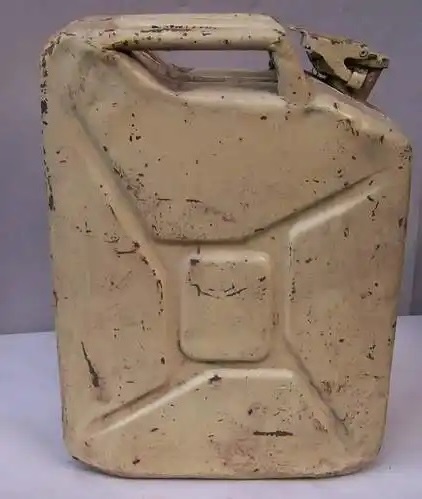
Brit ones had “WD” for War Department on them.
German cans had a bunch of German words on them.
I like to think those cans on that Studebaker were German
Soviet soldiers on a
Studer from the States carrying
German jerrycans.
A truly international brigade
I think that is a water can on the M3A1, as issued with the vehicle.
I’m not sure the US shipped many American cans to Allies overseas, by themselves. One ton of sheet steel could make 200 cans but only occupied 6 cu ft of shipping space, but 200 finished cans would consume 230 cu ft, so it was decided that the British would just make more of their cans for American forces. I can’t find detailed info on International Aid shipments of these. Interestingly, the statistical tabulations list 5-gal water cans, but 5-gal flammable liquid drums. Whether this designates just drums or drums plus cans, is unknown.
KL
KL
Found on the internet, i.e. borrowed knowledge, not my own (yet)
“At the outset of World War II, U.S. Jerry Cans were made of steel and painted olive-drab (green). A large “G” (Gas) or “W” (Water) was stamped on both sides of the can, near the top. Near the bottom of one side, the letters “U.S.” or “U.S.A.” were embossed into the steel. If the can was produced for the U.S. Marine Corps, “U.S.M.C.” replaced the “U.S.” or “U.S.A.” stamp found on Army cans. The same is true for cans produced for the Navy, with “U.S.N.” replacing the “U.S.” or “U.S.A.” stamp. Near the bottom of the opposite side, letters “Q.M.C.” (Quarter Master Corps) were stamped into the metal.”
I hate to throw out something that I can’t look up right now, but I recall recently seeing a photo of US cans being manufactured in NWE by a European manufacturer (IIRC, it might have been FN Herstal who also made extended track end connectors for the US Army).
With regards to Kurt’s observation about the shipping cubage, I’ve also encountered information while researching a project a few years ago about the US shipping USN Lighterage Pontoons to both the European and Pacific theaters as pre-cut, but unassembled bulk parts to be assembled in theater by the USN. The reasoning was to save shipping bulk since the assembled pontoons are mostly empty space.
I could easily see the US supplying the Soviets with bulk sheet steel (perhaps in coils) which could have been used to fabricate Soviet-style cans in Russia (or anything else that could be made from that gage sheet steel).
Not melted down Cossack Shashka swords?
Here’s the BII and combat load for a Sherman. Looks like two jerry cans were issued per tank. Although there may be another can or two on the right side of the 75mm rounds out of the camera view.
Wow I’ve never seen those. You hardly see anything on the outside of Russian tanks.
Can’t have things hanging outside, they would get stolen …
I think it would’ve been two fuel and two water cans per vehicle as per regulation. Anything else would’ve been picked up from resupply depots or “acquired” in the field.
P-47 Thunderbolt shipped in crate, assembled in a field.
WC-64KD (Knocked Down) two ambulances in one shipping crate
http://www.wc64.com/technical.htm
Jeep in a crate
https://www.militarytrader.com/military-vehicles/jeep-in-a-crate
Assembly of a crated GMC 2.5 ton
But the tanks do need oil for the engine, transmission, final drives, and such. Yeah they may have kept fuel in some of those cans, but oil was needed for daily maintenance.

